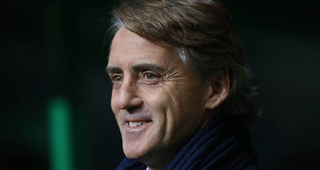We can place the disappointment in terms of years: 60 years, 30 years and 30 years. That is how long it’s been since Italy, the Netherlands and the United States have failed to make the World Cup, coalescing into each country’s failure to make it to Russia in 2018. The initial aftermath led to debates about the future of soccer in each country, and an optimism that governing bodies treat the cause and not just the symptom with a new, modern approach to tactics and player development. There was also existential dread. Gigi Buffon said succinctly “I am sorry for all of Italian football”.
“I hope I can be the person to to bring Italy back to a significant triumph,” said new national team Roberto Mancini.
Mancini was appointed six months after getting knocked out by Sweden in the playoff round, as managerial rumors ranged from a return of Antonio Conte to Claudio Ranieri.
Ronald Koeman, fired from Everton earlier this season, was hired to lead the Dutch in February (the Dutch coaching carousel was especially interesting with future prospects Frank de Boer and Peter Bosz each lasting just three and six months respectively at Crystal Palace and Dortmund).
And while the USMNT have yet to complete their soul searching by hiring a permanent replacement, they’ve reportedly named Earnie Stewart to a newly formed general manager position to oversee team selection.
Supporters dreamed of a Germany or Belgium style “shockwave” focusing on development starting from the grassroots level to break the nostalgia of a seemingly out of date playing style. Current Ajax assistant manager Ronald de Boer hinted at the answer, saying that the Dutch failed to bridge the gap between the players who made the finals in 2010 and the next generation who will be in their prime for the 2022 World Cup. As for now, Koeman tried to convince Arjen Robben to come out of retirement for the national side while extending an invitation to Robin van Persie. Mancini bought Mario Balotelli back to the national team. The biggest hurdle in moving a national side forward is perhaps not tactical, but something much more personal.
Yet without the three traditional powers, there is an opportunity for new sides to express themselves on the world’s biggest stage. Panama made their first ever World Cup at the USMNT’s expense, with Iceland also making their debut. Sweden finished above the Netherlands in the group stages and beat Italy in the playoffs for their first appearance since 2006. Peru qualified for their second World Cup in team history and first since 1982 in knocking out Chile. Although those results further cemented other bigger clubs as favorites. Brazil, Germany, Argentina, Spain and France lead the betting odds for 2018.
There is no optimism like the future. Koeman set a goal to have a style of play in place for the qualification round of the 2020 Euros. Buffon, in explaining his retirement, reiterated that it was time for new players to put their stamp on the national side. There is an inherent tension between the immediacy of blaming individuals and implementing a costly, long-term systemic overhaul based on generational foresight. Naming a new manager is the easy part, and the conclusions that each country drew from not making the 2018 World Cup will play out over the upcoming years. If they learned the wrong lessons, then each country may miss out on 2022 as well.



